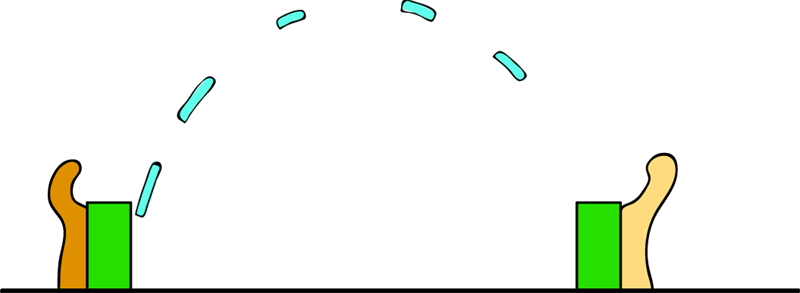|
Fountain of Bits
|
As much as we tend to forget it, there is a physics of information. No communication occurs without being first embodied in a substrate, whether it be infra-red emission, paper, or electronic pulse. Even human biological communication is not exempt. We broadcast sound invisibly through the air in compression waves, or gesture by light. Fountain of Bits proposes to set us thinking about communication and medium by transmitting information over jumping jets of water.
What is it? Fountain of Bits consists two small kiosks in a public plaza standing ten to twenty feet apart. As you approach one, you see that it has a large keypad and big green button that says "SEND." There is a oversized flashing cursor on a screen. You are compelled to type a short message: "What are you?" You hit the send button and without warning, a powerful jet of water shoots out the other side of the kiosk and arcs into the air. The stream is chopped into small coherent segments like bars of glass as they fly toward their target. They hit the back of the far kiosk, and are absorbed silently. You cannot help but walk over to the other kiosk to see how it responded. On the screen there it says, "What are you?" A cursor flashes below it, waiting for you to type a message to send back. You have just communicated wirelessly over air with water. Will you compel a passerby to stand at the other kiosk? Will you spend a few minutes sending messages back and forth in jets of water?
What does it mean to be a medium? All communication media share a core set of properties. They must be predictably and easily controlled, travel efficiently over the requisite distances, be effectively unlimited in quantity, and be easily measurable. The extent to which communication media conform to these indicates in large part how successful and widespread their applications are. Infra-red, for instance, is cheap and easy to control, but does not travel well over distance, making it good for remote controls but bad for digital networks. It is possible to imagine using almost anything as a medium if you appropriately tailor your expectations of the communication. Laminar jets of water, for instance should be capable of sending a reasonable quantity of information very slowly over distances of ten to twenty feet. One consequence of being a medium is to cede a certain amount of identity to the message being carried. It is inevitable that a medium is forgotten. Fountain of Bits wants to challenge that by using a visible and highly valenced medium for a communication that would otherwise be instant and invisible.
What will it do for the community? Fountain of Bits will involve people, friends or total strangers, in a funny kind of dialog. During the time that it is active, it will be visible from a good distance. People will quickly come to understand what it is doing. It will be something that people take others to see as an example of what MIT is all about—the seamless integration of art and engineering. |
